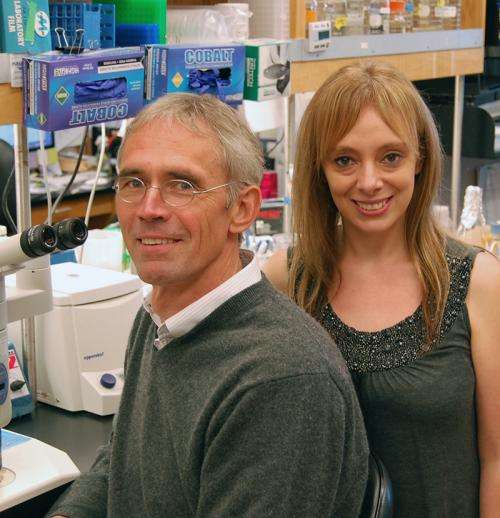Scientists find key signal that guides brain development

Scientists at The Scripps Research Institute (TSRI) have decoded an important molecular signal that guides the development of a key region of the brain known as the neocortex. The largest and most recently evolved region of the brain, the neocortex is particularly well developed in humans and is responsible for sensory processing, long-term memory, reasoning, complex muscle actions, consciousness and other functions.
"The mammalian neocortex has a distinctive structure featuring six layers of neurons, and our finding helps explain how this layered structure is generated in early life," said Ulrich Mueller, chair of TSRI's Department of Molecular and Cellular Neuroscience and director of the Dorris Neuroscience Center at TSRI.
The discovery, which appears in the August 7, 2013 issue of Neuron, also is likely to aid research on autism, schizophrenia and other psychiatric conditions. "With studies such as this one, we're starting to understand the normal functions of molecules whose disruption by gene mutations can cause developmental brain disorders," Mueller said.
Finding Their Proper Place
The signal uncovered by Mueller's team is one that helps guide the migration of baby neurons through the developing neocortex. Such neurons are born from stem-like cells at the bottom of the neocortex, where it wraps around a large, fluid-filled space in the brain called ventricle. The newborn neurons then migrate upward, or radially away from the ventricle, being directed to their proper places in the neocortex's six-layered, columnar structure by—among others—special guide cells called Cajal-Retzius (CR) cells.
Decades ago, scientists discovered a key signaling protein, reelin, which CR cells secrete and baby neocortical neurons must detect to migrate properly. (Mutant mice that lack a functional form of the protein show, among other abnormalities, a reeling gait—thus the name.) There have been hints since then that CR cells and baby neocortical neurons exchange other molecular signals, too. "But in many years of study, no one has been able to find these other signals," said Mueller.
However, in a study published in 2011, Mueller and his laboratory colleagues found a significant clue. Reelin, they discovered, guides neuronal migration at least in part by boosting baby neurons' expression of a generic cell-adhesion molecule, cadherin2 (Cdh2). Since Cdh2 can be expressed by almost any cell type in the developing neocortex, the team then began to look for other factors that would account for the specificity of the interaction between CR cells and migrating baby neurons.
An Interesting Pattern
One set of candidates were the nectins—cell-adhesion proteins known to work with cadherins in other contexts. Lead author Cristina Gil-Sanz, a senior research associate in the Mueller laboratory, mapped the expression levels of the four known types of mammalian nectin proteins in the developing mouse cortex and found an interesting pattern. "We observed that nectin1 is expressed specifically by CR cells and nectin3 by migrating neurons," said Gil-Sanz. "At the same time, we knew from previous research that nectin1 and nectin3 are preferred binding partners."
Gil-Sanz and her colleagues followed up with other experiments and soon confirmed that the hookup of nectin1 on CR cells with nectin3 on baby neurons is essential for proper neuronal migration. "This showed for the first time the importance of direct contacts between CR cells and migrating neurons," Gil-Sanz said.
The experiments also showed that this direct nectin-to-nectin connection is effectively part of the reelin signaling pathway, since reelin's promotion of Cdh2's function in migrating neurons turns out to work largely via nectin3. "This helps explain how the interaction occurs specifically between neurons and CR cells, and doesn't involve other nearby cells that also express Cdh2," she said.
New Possibilities
The finding points to the possibility of other cell-specific pairings that work via generic Cdh2-to-Cdh2 adhesions in brain development. "We know that there are four nectin proteins, plus a slew of nectin-like molecules," said Mueller. "We think that there are others that do this as well, and we're hoping to find them."
The new study represents a big step toward the full scientific understanding of neuronal migration in the neocortex, and it is likely to be relevant to the study of developmental brain diseases too.
Reelin-signaling abnormalities in humans have been linked to autism, depression, schizophrenia and even Alzheimer's, and, in recent years, cadherin protein mutations also have been linked to disorders including schizophrenia and autism. "Studies like ours provide insight into such findings, by showing that these molecules, in cooperation with nectins, regulate key developmental processes such as the positioning of neurons in the neocortex," said Mueller.
More information: "Cajal-Retzius cells instruct neuronal migration by coincidence signaling between secreted and contact-dependent guidance cues," Neuron, 2013.















